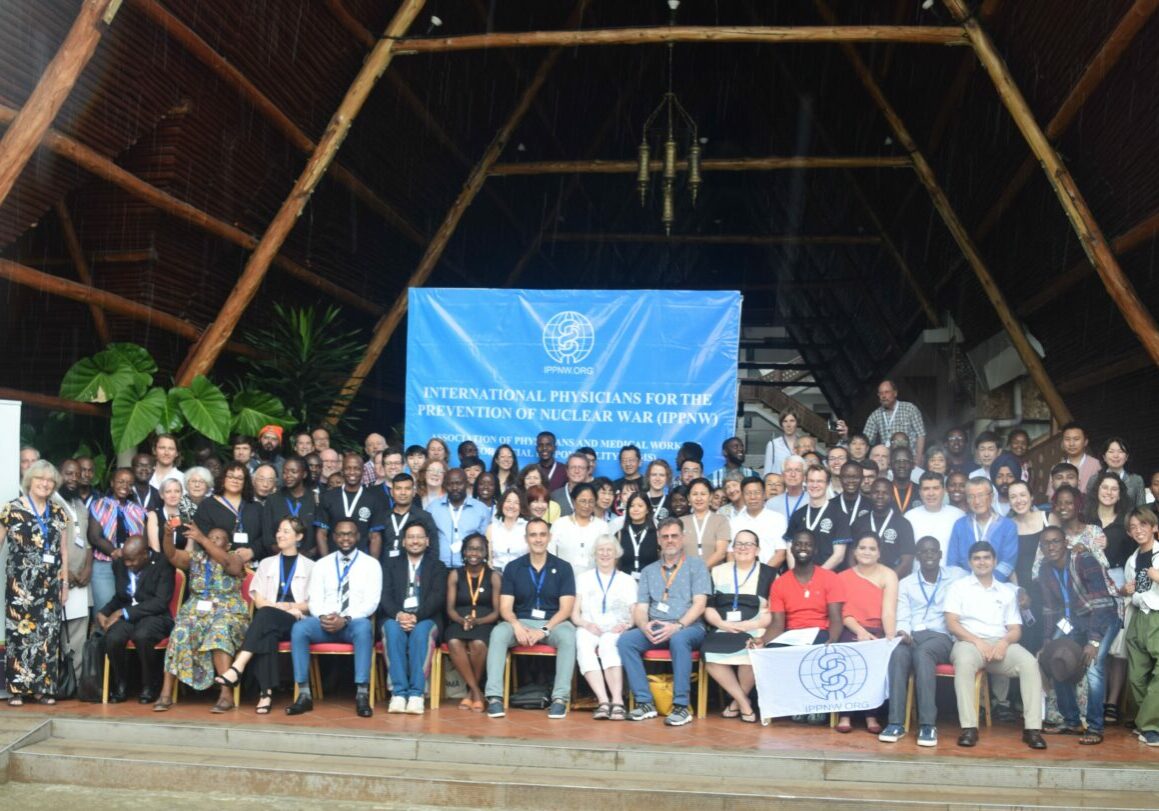IPPNW: abolish nuke weapons AND power
May 12, 2023

The Nobel Prize-winning organization of medical professionals — International Physicians for the Prevention of Nuclear War — passed a resolution at its 23rd World Congress, in Mombasa, Kenya on April 30, 2023, entitled: Links between Nuclear Weapons and Nuclear Power. Beyond Nuclear welcomes this statement, especially coming from those who truly understand the impossible medical consequences of nuclear war or a nuclear power plant catastrophe as well the pathway left clear for nuclear weapons development by the continued use of nuclear power.
The text of the resolution follows:
IPPNW affirms that the links between nuclear power and nuclear weapons are such that in order to fully abolish nuclear weapons, we also must stop the parallel process of nuclear power.
This resolution is an updated version of a similar resolution “Nuclear Weapons and Nuclear Energy – The Links” adopted at the 13th World Congress of IPPNW in Melbourne, Australia, December 1998.
IPPNW urges that there be:
-
No more uranium mining. Leave it in the ground.
-
No more plutonium extraction from existing nuclear materials.
-
No new nuclear power plants.
-
Expeditious transition from nuclear power to renewable energy sources.
-
Blending down of existing stores of highly enriched uranium thus rendering these stores less likely to be diverted for nuclear weapons proliferation. How to handle plutonium to make it safe is still being discussed.
Reasons for Above:
-
The acquisition of nuclear-weapons-useable materials is the first step to making nuclear weapons
-
The technical processes to create nuclear power or nuclear-weapons-usable materials are essentially the same. Many nuclear plants have produced both. For example Chernobyl was a “dual purpose” plant.
-
The 1953 “Atoms for Peace” speech was widely seen as a cover for the military to maintain access to nuclear-weapons material after the closure of the Manhattan Project.
-
Nuclear power makes the proliferation of nuclear weapons more likely and verification of nuclear weapons more difficult. For example India made and exploded its first nuclear weapons test from a reactor given to India from Canada. This example of proliferation happened despite promises to the contrary.
-
The problem of what to do with high level nuclear wastes remains an unsolved dilemma threatening the environment and human health. This issue is similar for wastes originating from commercial nuclear fuel cycles or wastes from military grade material. Health hazards and multi generational health effects are the same from either stream.
-
The ‘weaponization’ of a nuclear power plant can happen in areas of conflict with great risks of purposeful or accidental dispersal of radioactive material. (e.g. Zaporizhzhia plant in Ukraine).
Support Beyond Nuclear
Help to ensure a safer, greener and more just world for all

